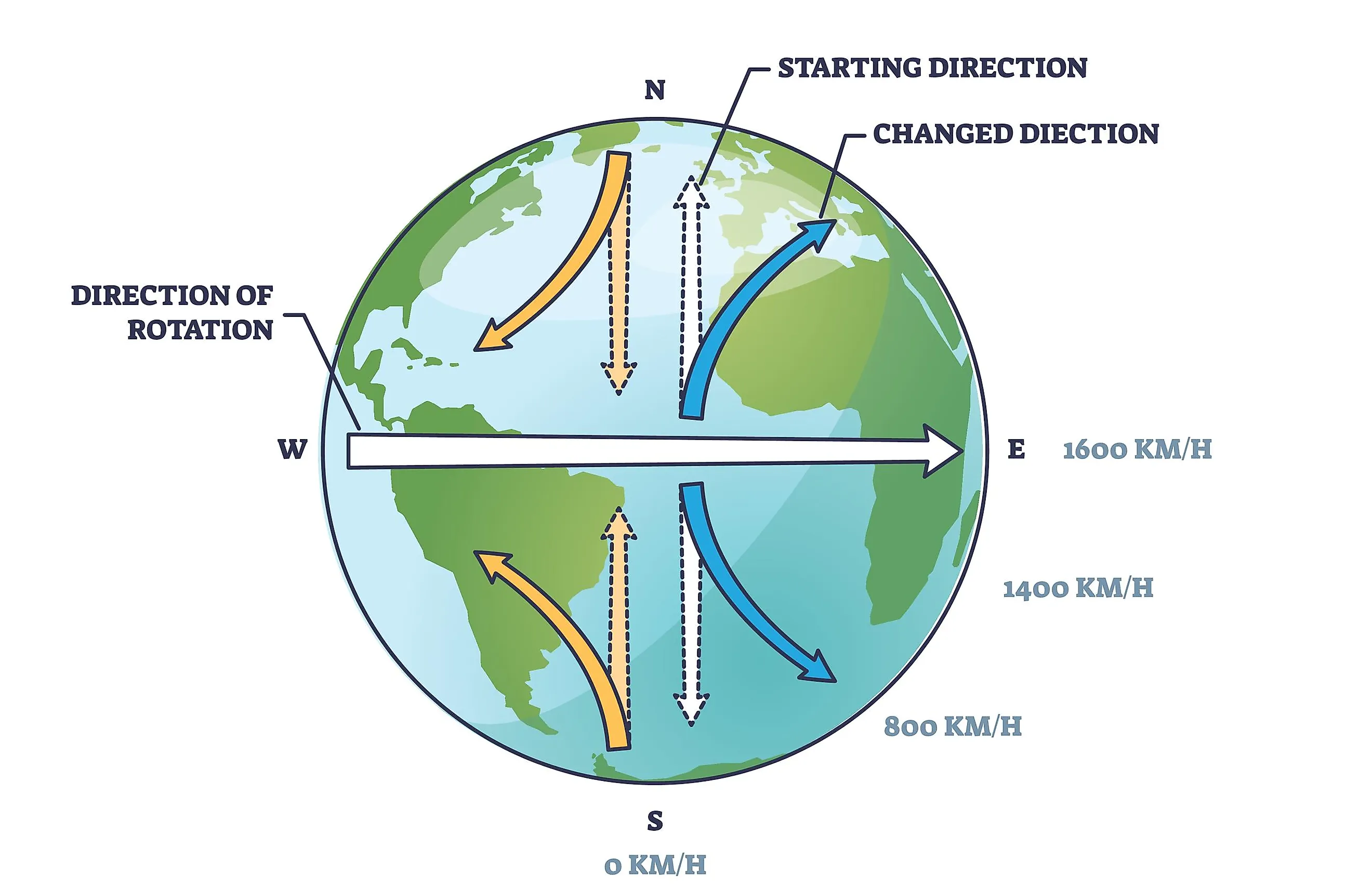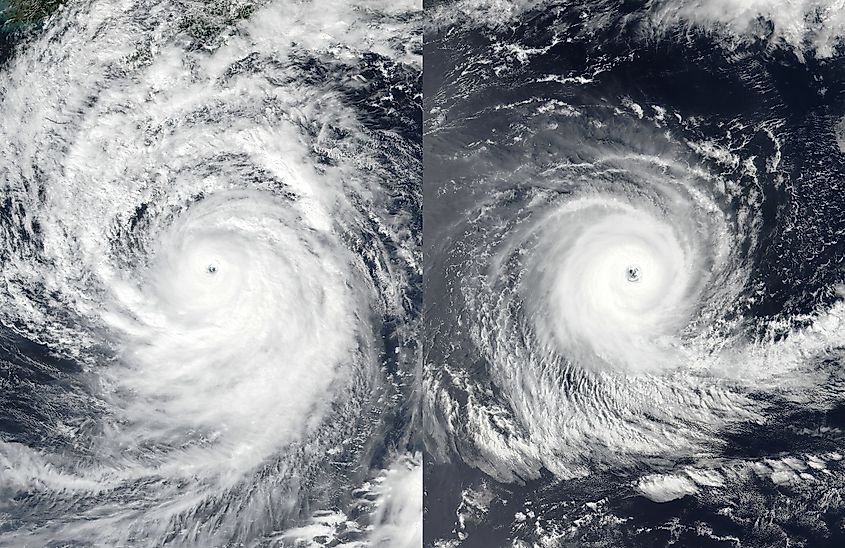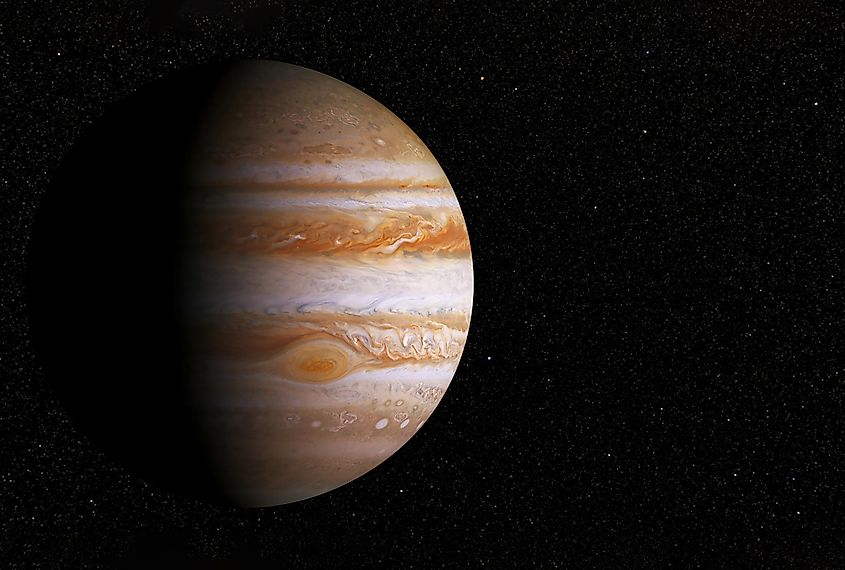
What is the Coriolis Effect?
The Coriolis Effect, named after its discoverer, the French mathematician Gaspard Gustave de Coriolis (1792-1843), describes the deflection of the path of objects not connected to the ground, such as winds, storms, hurricanes, aircraft, etc. This effect contributes to the behavior of many large-scale weather patterns. Put simply, the Coriolis effect results from the Earth's rotation. The Earth completes one rotation every 24 hours. However, the Earth is wider at the Equator than at the poles, which means that the Equator rotates faster than the poles. The Equator rotates at nearly 1,600 kilometers (1,000 miles) per hour, while in Earth's polar regions, the rotation happens at a much slower rate (about 0.00008 kilometers, or 0.00005 miles per hour). This disparity in the rotational velocity along different regions of the Earth results in the apparent bend/deviation from an object's linear path. In other words, the presence of a rotating reference frame, the Earth's rotation around its axis, gives rise to the Coriolis phenomenon.
Large-scale fluids traveling across large areas, mainly air currents, deflect to the right in the northern hemisphere as they travel northward, while in the southern hemisphere, these fluids deflect to the left as they travel southward. This invisible force that apparently deflects wind is known as the Coriolis Force. It is important to note that this force is not in actuality a force but is what is known as a pseudo-force. There is no physical interaction that drives the winds to deviate, but the appearance of this deviation can be mathematically attributed to the existence of a force, hence the name pseudo-force.
Influence On Weather Patterns

Cyclones and trade winds are direct examples of the Coriolis effect at play. Cyclones are low-pressure systems that rotate and spiral towards their center; the air at the boundaries of the cyclone exists at a high-pressure state and, thus, naturally, diffuses towards the low-pressure region at the center. In the Northern Hemisphere, this diffusion occurs counterclockwise as the air spirals towards the center. In the Southern Hemisphere, currents are deflected to the left, meaning that storm systems would rotate clockwise, opposite to that in the northern hemisphere.
Not only does the Coriolis effect affect storm systems, but it also contributes to major and regular wind patterns around the planet. Air warms and subsequently rises at the Equator and then flows toward the poles. In the Northern Hemisphere, these air currents deflect to the right (east) as they move northward. The currents descend back toward the ground as they cool. As the current descends, it gradually moves from the northeast to the southwest towards the Equator. The continuous process of circulation of air is known as trade winds. Local winds affect coastal currents, while complex global wind systems affect surface ocean currents. Both local winds and global wind systems are affected by the Coriolis Effect, so it is clear that the Coriolis effect affects many aspects of the dynamics of the Earth. This effect is very significant for earth sciences, i.e., meteorology, physical geology, oceanography, and even aerodynamics.
The Coriolis Effect On Other Planets

The Earth rotates relatively slowly compared to other known planets. The slow rotation of Earth means the Coriolis effect is not strong enough to be seen at slow speeds over short distances. On Jupiter, the deflection caused by the Coriolis Effect is so powerful that regular weather patterns are extremely warped. This occurs because Jupiter has the fastest rotation in the solar system at about 45,583 km/hour. On Jupiter, its high rotation speed shows an extreme example of the Coriolis effect by transforming north-south winds into east-west winds, some traveling at staggering speeds of more than 610 kilometers (380 miles) per hour. The divisions between winds that blow mostly to the east and those that blow mostly to the west create clear horizontal divisions, called belts, among the planet's clouds. The boundaries between these fast-moving belts are extremely active storm regions. The Great Red Spot is the most famous of these storms, raging on for almost 180 years.
The Coriolis Effect plays an active role in the dynamic movement of the Earth's atmosphere and its weather patterns. The presence of a rotating frame of reference causes objects moving longitudinally to diverge from their straight-line path. This divergence, attributed to the Coriolis Effect, explains most large-scale airborne movements, be it winds, clouds, storms, and even airplanes. There is evidence of the Coriolis Effect being present on other planets as well. Jupiter, being the fastest rotating planet in our solar system, experiences a great effect from the Coriolis force. Winds and gaseous movements are diverted so remarkably that horizontal divisions, called belts, appear in Jupiter's atmosphere. The Coriolis Effect allows for the understanding and studying of weather patterns on Earth and on other planets, alongside aiding in the study of meteorology, physical geology, oceanography, and aerodynamics.











